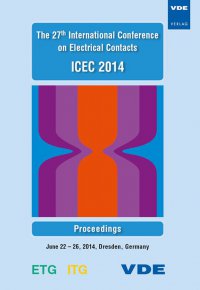The Effects of Induced Defects on Pore Corrosion
Conference: ICEC 2014 - The 27th International Conference on Electrical Contacts
06/22/2014 - 06/26/2014 at Dresden, Deutschland
Proceedings: ICEC 2014
Pages: 6Language: englishTyp: PDF
Personal VDE Members are entitled to a 10% discount on this title
Authors:
Martens, Rod; Loyd, Andrew; Hemond, Jessica (TE Connectivity, Middletown, PA, USA)
Abstract:
The influence of substrate roughness on porosity is well known. Past investigations have typically varied roughness by polishing substrates with different grit metallographic sand paper. In this work, controlled defects were introduced into smooth stock in an effort to more precisely quantify the relationship between localized surface morphology and porosity. Defects were induced in 0.55nm Ra phosphor bronze base metal coupons using microindentation and nanoscratch techniques. Depths of the defects ranged from approximately 40nm to over 200nm in an effort to mimic defects ranging from typical incoming material roughness to handling scratches. The coupons were then plated with a 1.27micrometer thick nickel barrier layer and cobalt hardened gold. Two thicknesses of gold were evaluated, specifically 0.25micrometer and 0.76micrometer. The coupons were then exposed to EIA 364-65 Class IIA mixed flowing gas to drive pore corrosion. Results indicate that micro-defects such as burrs induced during scratching/indenting were most significant in triggering pore corrosion, while the size/depth the scratch or indent was not as significant.


